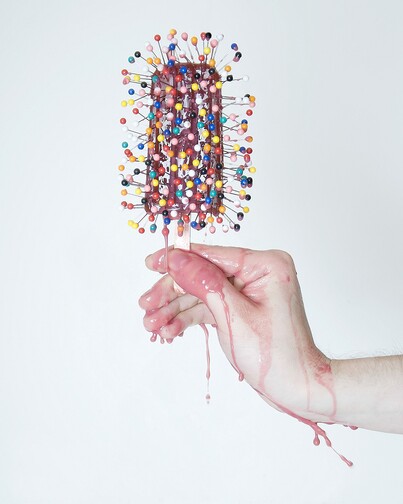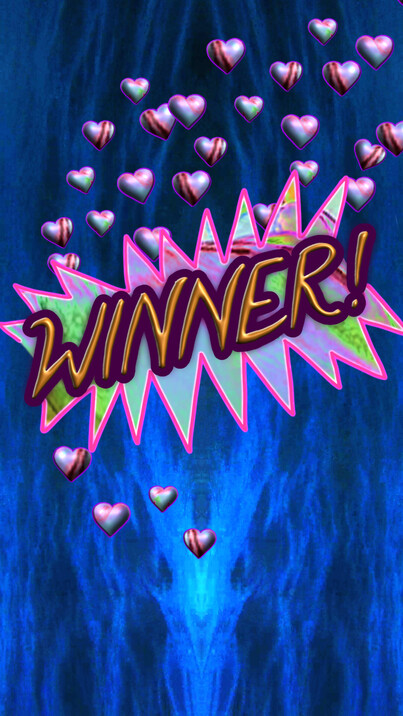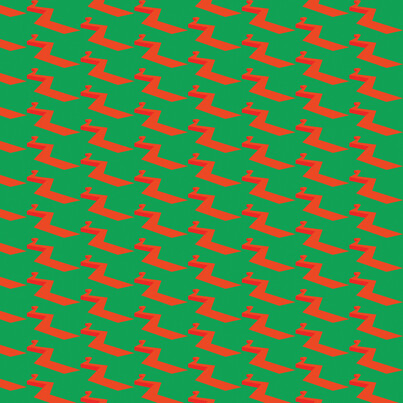Experiments in art: a new Science Gallery in London
by Katy Barrett
Reviews /
Exhibition
• 09.01.2019
The Science Gallery at King’s College London is the second art space to open as part of the global Science Gallery initiative. The first was installed at Trinity College Dublin in 2008, and others are in development in Melbourne, Bangalore, Venice and Detroit. Each has the ambition to connect a wider public to university research by displaying art and collaborating with artists, with a particular focus on engaging local young people. In London, it is King’s College driving the research agenda of the gallery. Researchers form part of the ‘Leonardo Group’, which helps shape the programme in which collaborative pieces are commissioned from artists working with scientists from Kings and relevant groups. Research permeates the exhibition interpretation and is actively presented in the accompanying events programme.
Housed in a refurbished Georgian building on the Guy’s Campus in London Bridge, the gallery connects a newly landscaped public square to the major redevelopment around London Bridge station and the Shard, as well as opening with a large glass façade onto Great Maze Pond – one of London’s oldest thoroughfares. With a flexible ground floor housing a café, shop and events space, galleries and studio upstairs, and an auditorium below, the building is planned to host three themed seasons per year rather than developing a permanent collection. It is interesting to see this interdisciplinary and varied research context creating the opportunity for the kind of significant investment that now seems less available to the visual arts on their own.
The first season, HOOKED: When Want Becomes Need, asks us to reconsider our ideas about addiction. Rather than presenting it as a moral problem, HOOKED draws on current research at King’s to argue that addiction is a medical problem, one that we all encounter and that requires societal treatment. Newly commissioned pieces are shown alongside a selection of existing works, divided into sections that explore what causes addiction (focusing particularly on modern technologies), who is to blame and recovery.
Works at the exhibition entrance bring home the compulsive, dehumanised but universal nature of addiction with a striking emphasis on hands rather than faces. Olivia Locher’s photograph Another Day on Earth (Pincushion) FIG.1 plays with the language of advertising, enticing with a melting ice lolly sprinkled with brightly coloured sweets that turn out, on closer inspection, to be pins. Richard Billingham’s two films Playstation and Jason Chopping focus on fingers playing with a console or preparing cocaine with a bank card, the rhythmic gestures recalling the myriad repetitive movements in which we each take daily comfort, whether that be a scroll or a caress.
Like Locher’s photograph, many of the works in the show engage with visual languages, reminding us that these are just as important to scientific contexts as to the arts. For instance, Katriona Beales’s Entering the Machine Zone II FIG.2 invites the viewer to play on a kind of slot machine, in which they match the types of image so seductive online – from juicy burgers to kittens or toned bodies – while simultaneously having personal data extracted through eye-tracking technology. YoHa’s Database Addiction, Table of Tables (2015–17) takes the datasets and databases used by staff caring for those struggling with substance misuse and questions how their personal stories and varying needs become buried in the requirements of the software. This piece is particularly compelling in its visual questioning of data – the table displays the words that occur most frequently in three main databases – and in the trust we place in the tools of visual representation used by science. It is unclear, however, why the piece was displayed on a wall rather than as it was designed: as a table.
In each of the commissioned works, the artists invite the viewer to consider the lived experiences of others. Blast Theory’s Short Periods of Structured Nothingness draws you into a conversation with seven young women about how they seek comfort in everyday habits, from drinking to instant messaging, and asks you to consider your own approaches to addictive behaviours. In Look on me and be renewed, Mark King creates a multimedia installation using pattern FIG.3, based on research conducted at King’s on the visual stimuli that can shape addictive behaviour. Working with a spoken-word artist, a theatre director and young residents of Oakhill Secure Training Centre, Dryden Goodwin’s visual essay The Workshop FIG.4 asks you to think with these young men about the sensory and emotional effects of drugs. Goodwin’s film captures the process as they found ways to express their addictive relationships through word and image. He combines photography, text and drawings from the sessions with his own fragmented portrait sketches to create an absorbing record of their collaboration.
The piece that most encapsulates the aims of the show is Rachel Maclean’s film Feed Me. Simultaneously compelling and repellent, the more disturbing the characters and their actions become, the more difficult it is to stop watching. In an unsettling but beautifully crafted imaginary world that is typical of Maclean’s recent work, she stages a battle between commercialised childhood and infantilised adulthood: greed is good, and emotion is expressed through the language (both verbal and visual) of emojis, chat shows and internet memes. The film mimics the polar extremes of addiction, lurching between pleasure and pain, the thrill of sensory stimulus and the guilt after participating in such encounters.
The exhibition is accompanied by a series of events, ranging from talks and workshops to Friday lates, which develop the questions raised around addiction in collaboration with researchers, artists and sufferers. It is an ambitious aim by the Science Gallery to bring together such varied conversations around topics – like addiction – of ongoing global significance. One question remains around their tagline ‘Where art and science collide’. Collision implies separation, antagonism and difference, maybe even violence. Yet what HOOKED does so well is to show us that the art is as implicated in discussions of addiction as science, and that the science is just as shaped by its cultural surroundings.








